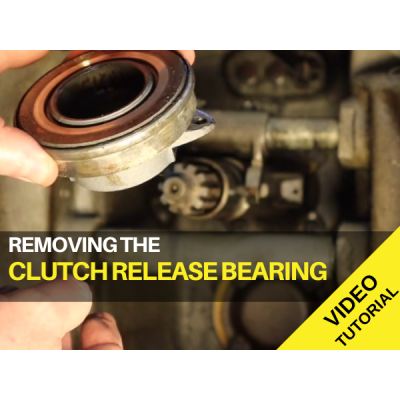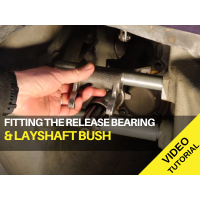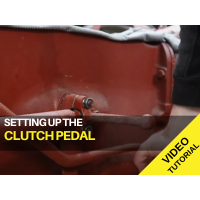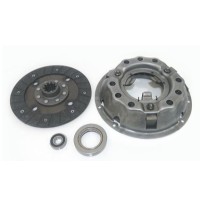Ferguson TED20 - Removing The Clutch Release Bearing - Video Tutorial
Gordon begins work on the clutch of his Ferguson TED20 - this video focuses on removing and replacing the clutch release bearings.
'As we get started on the Clutch - the first job is to replace the Release Bearing. As we get into this we realise the layshaft is way too stiff - remedial action is required.'
What is the clutch release bearing and how does it work?
The role of the clutch release bearing is to disengage the clutch. The Clutch enables the operator to disengage drive between the engine and the transmission, enabling gear change without exactly matching engine speed to transmission speed. When the clutch is engaged, the friction plate (splined onto the gearbox) is clamped against the flywheel by the cover assembly (attached to the engine), forcing the transmission to rotate at the same speed as the engine. When the operator depresses the clutch pedal to disengage the clutch, the release bearing is pushed against the release fingers on the clutch cover assembly by the clutch fork, attached to the clutch pedal cross shaft.
As the clutch cover is bolted to engine flywheel, it is permanently rotating when the engine is in operation. As the clutch release fork does not rotate, it must push something that CAN rotate (eg. the clutch release bearing) onto the cover assembly instead. The clutch release bearing will only rotate when the clutch pedal is being depressed.
How do you know if your clutch release bearings have failed?
When a clutch release bearing begins to fail, it will ultimately result in further damage to the clutch itself if operation is continued.
It is important to recognise the signs of failed clutch release bearing, to avoid unnecessary damage. Often, there are plenty of warning signs prior to a complete failure. Signs of failure are often a squealing, grinding out grumbling sound that only happens when the pedal is pressed (as this is the only time that the bearing should rotate). In more severe cases, you may experience vibration or ‘feedback’ in the clutch pedal itself.
Why do clutch release bearings fail?
Like all bearings, clutch release bearings will deteriorate through wear and tear over time, this is unavoidable.
Simply put, the more that the bearing rotates, the faster it will wear out. Premature failure is normally due to the following;
- ‘Riding the clutch’ or resting your foot on the clutch pedal - this will not apply enough pressure to disengage the clutch itself, but it will cause the release bearing to press against the cover assembly, forcing it to rotate constantly.
- Improper adjustment – if pedal free play is not correctly set, it will cause the release bearing to permanently rotate, similar to resting your foot on the pedal.
Products used:
A68358 - Clutch Kit
On their smallholding in north Devon Gordon, Kathy and Oscar spend many weekends working on their land and their tractors. Visit their channel for more instructional videos for your tractor: Waterhouse Forde
Ferguson TED20 - Removing the Clutch Release Bearing & Layshaft - Video Tutorial
Anglo Agriparts stock 1000's of parts for Ferguson tractors, buy parts for your Ferguson TED20:
Licence Terms
You are free to: Share, copy & redistribute the material in original format for any purpose as long as you follow the license terms below:
- Attribution – you must give appropriate credit and provide a link to the original article in a reasonable and visible manner
- You may not in any way suggest that the licensor endorses you or your use.
- No Derivatives – The material must be distributed in full, including disclaimer, you may not distribute or share modified material.
- No additional restrictions – You may not apply legal terms that legally restrict others from doing anything the licence permits.
- No warranties are given. The license may not give you all of the permissions necessary for your intended use. For example other rights such as publicity, privacy, or moral rights may limit how you use the material.
Disclaimer
Related Articles
Clutch Trouble Shooting For Tractors
Help identify the common causes of clutch failure with this troubleshooting guide from Anglo Agriparts.
Ferguson TED20 - Fitting the Release Bearing & Layshaft Bush - Video Tutorial
Gordon fits the release bearing and layshaft bush on his tractor in this latest tutorial in the series following the restoration of his TED20.
Ferguson TED20 - Setting up the Clutch Pedal - Video Tutorial
The latest in his series of videos of a TED20 restoration, here Gordon guides us through the set up for the clutch pedal. The clutch provides transfer of torque between shafts spinning at different speeds. Engaging the clutch allows power to transfer from the engine to the transmission and drive wheels.






